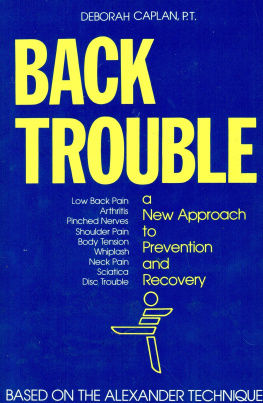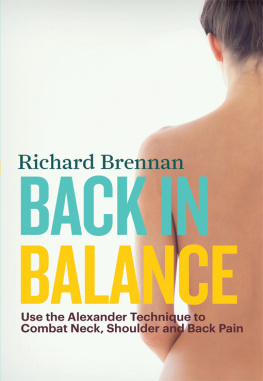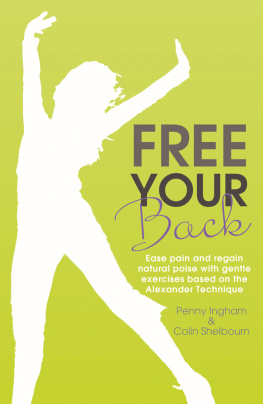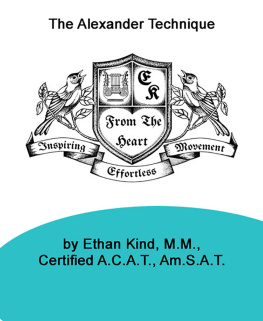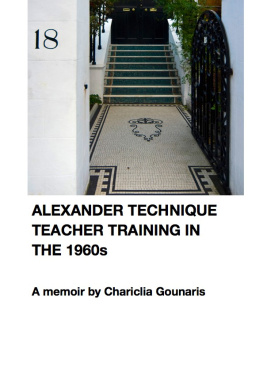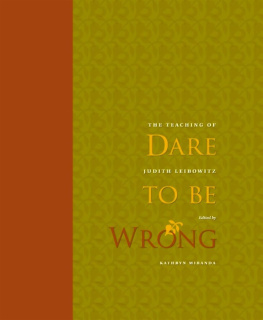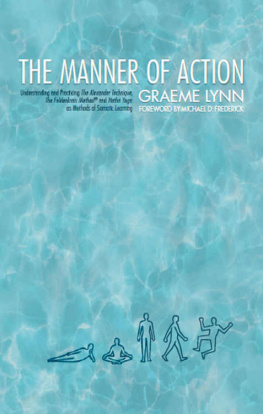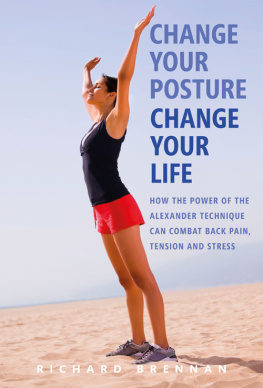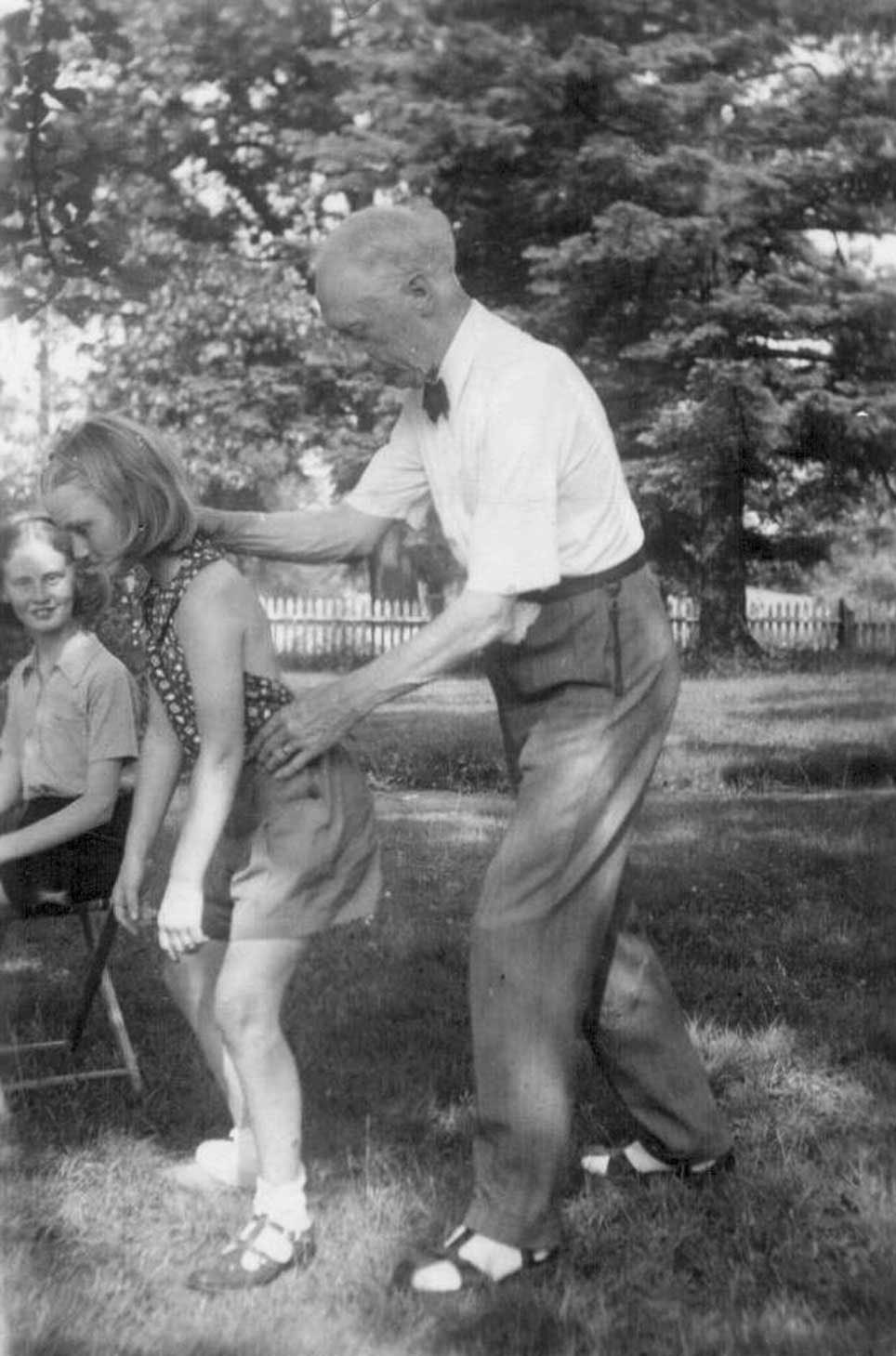How we carry our bodies involves choice. Back Trouble clearly describes how to make choices that lead to balanced easea process that can help decrease many forms of back pain and increase overall well-being.
John H.M. Austin, M.D.
Radiologist
Columbia-Presbyterian Medical Center, NY
The Alexander Technique has played an important and beneficent part in my life. I hope the clarity and simplicity of the Technique as laid out in Ms. Caplans book will help to spread the general use of this most valuable tool.
John Houseman
Producer, Director, Actor
Alexander students rid themselves of bad postural habits and not only appear to grow taller by two inches or so, they are helped to reach, with their bodies and their minds, an enviable degree of freedom of expression from which to embrace the rest of their training.
Michael Langham
Director, Theatre Center
The Julliard School, NY
I have found after working with you and using the Alexander method a terrific relief from the usual lower back pain Ive had. Thanks, Debby.
Jim Dine
Artist
Deborah Caplans book, Back Trouble , is excellent, readable, and gives details of her treatment not available before.
Edwin S. Stempler, M.D., F.A.C.S.
Orthopedic surgeon
Palm Springs, CA
I believe Deborahs book is the clearest presentation of Alexanders work yet written.
Judith Trobe, M.A., P.T.
Physical therapist, NY
BACK TROUBLE
A New Approach To Prevention And Recovery
by Deborah Caplan, M.A., P.T.
Photographs by the author
Anatomical drawings by Nancy Schadt
Human figure drawings by Kristin Johnson
Text copyright 2000 by The American Center for the Alexander Technique, Inc.
Illustrations copyright 2000 by The American Center for the Alexander Technique, Inc.
All rights reserved. No part of this book may be reproduced in any manner without written permission of the publisher.
Published and Distributed by
The American Center for the Alexander Technique, Inc.
317 West 107th Street, #2B
New York, NY 10025
Table of Contents
To my mother, Alma Frank, in memory and gratitude
To Aaron and Leah
And to Larry
Foreword
BACK TROUBLE IS A frustrating problem for both patient and physician. Physicians are trained to relate signs and symptoms to specific diseases and to diagnose and treat accordingly. But, in the case of chronic back pain, it is often impossible to make a specific diagnosis, and most treatments fail. The patient, increasingly dependent on analgesics, gets frustrated and depressed, and the physician loses tolerance for the patient he cannot treat. As a result, more than ninety percent of patients in chronic pain clinics are there because of back pain.
The impact of back pain is felt not only by physician and patient, but by society as a whole. The costs of medical care and of absenteeism from the workplace amount to many billions each yearyes, billions. Back pain is the most expensive disease of the middle-aged worker.
What is even more alarming is that the number of people who have back trouble is increasing while our understanding of the condition remains inadequate and our treatment haphazard.
Can the situation be changed? And how?
Let me start by saying that little will change until the medical community becomes more open-minded about legitimate alternatives to conventionalbut usually unsuccessfulmedical therapies. The Alexander Technique is one such alternative. It is a system for teaching people how to best use their bodies in ordinary action to avoid or reduce unnecessary stress and pain. It is a system of postural education, a way of heightening the kinesthetic sense.
My own exposure to the Alexander Technique came about quite by accident. As the neurosurgical director of a busy spinal surgery service, I am constantly alert to the need for qualified physical therapists who are knowledgeable about spinal mechanics and, equally important, are interested in care of patients with either acute or chronic back ailments. Finding such therapists is difficult, and when one opened her office near the Westchester Medical Center, I was delighted.
What amazed me about this new therapist was that her office contained only a chair and a table with a mat, and yet the patients I sent to her were getting better faster. I soon discovered that she was teaching them how to use their bodies with the ease of movement for which the body was designed and intended. Oh, yes, she gave them specific exercises, but most importantly, she used the Alexander Technique.
Well, up until that point, the only Alexanders I had been familiar with were Alexander the Great and Alexanders Ragtime Band. F. M. Alexander was a new acquaintance. It is not my objective to tell you about him or the Technique since you have bought this exciting book. I will say, however, that the uniqueness of the Alexander approach is that it emphasizes using the mind and body in unity. This is undoubtedly the best way to care for the back and alleviate back pain.
The Alexander Technique stresses unification in an era of greater and greater medical subspecialization. It enables patients with back trouble to get better faster and stay better longer.
Jack Stern, M.D., Ph.D.
Neurosurgical Director
Section of Spinal Surgery
Westchester Medical Center
New York Medical College
Valhalla, New York
Preface
I WAS TEN YEARS old when I first met F. M. Alexander, and to this day what comes to mind when I think of him is his twinkling eyes, the elegant spats he loved to wear, and his nightly readings to us children from Winnie the Pooh and The Wind in the Willows . These memories date back to 1941, when Alexander spent time in the United States. During his stay here he established a small live-in school in Massachusetts, which I attended. At the school we received our usual academic instructions plus daily lessons from Alexander.
I again took lessons from Alexander after I graduated from college, this time traveling to England to do so. My appreciation of his work was naturally on a more adult level this time around. I have personally benefited from having the Alexander Technique as part of my daily life, and I have helped my patients derive similar benefits by integrating the technique into their physical therapy treatment.
I now want you to start applying Alexanders technique to your own daily activities. As a way to begin, I would like you to read an excerpt from Alexanders book, The Use of the Self , which is about good health and how we use our bodies:
... the most valuable knowledge we can possess is that of the use and functioning of the self, and of the means whereby the human individual may progressively raise the standard of his health and general well-being.
The author, age ten, and F. M. Alexander. (Photo by Alma Frank)
Acknowledgments
FIRST AND FOREMOST I want to express my deepest gratitude to Judith Trobe, physical therapist and teacher of the Alexander Technique, who provided many of the essential ingredients required for the completion of this book. Her constant support and assistance were invaluable to me. When the manuscript was ready to be critiqued by a physical therapy colleague, Judy took on the job. She devoted countless hours and meticulous care to this vital task, giving generously of her considerable knowledge and experience. The book is much enriched by her many contributions.
Without the assistance of my Alexander colleagues, this book could not have been written. I am most grateful for their recommendations and criticisms, and for the generosity of those who gave their time and Alexander skills by demonstrating for the instructive photographs. I want to thank Pamela Anderson, Pearl Ausubel, Ron Dennis, Joanne Howell, Carolyn Kitahata, Jane Kosminsky, Judith Leibowitz, Julia MacKenzie, Carolyn Monka, Ruth Belding Nardini, Thomas M. Nardini, Maria Parker, Eleanor Rosenthal, Mollie Schnoll, Jessica Wolf, and Andrew Zavada.

